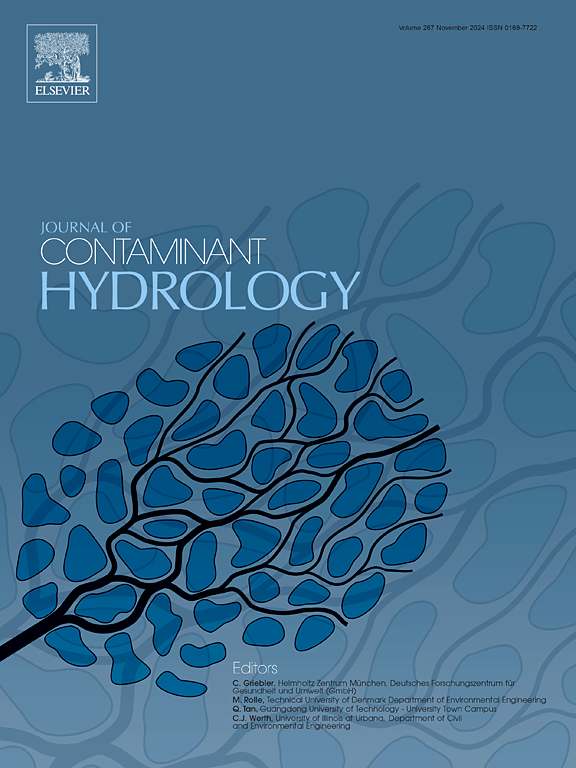基于组合机器学习模型的水质预测方法——以大陵江流域为例。
IF 4.4
3区 环境科学与生态学
Q2 ENVIRONMENTAL SCIENCES
引用次数: 0
摘要
总氮(TN)是制约河流水质的关键因子。识别其时空变化及其影响因素对预测污染趋势和减轻水质风险至关重要。然而,实时监测不足、时空建模受限、多源数据特征选择复杂等挑战依然存在。利用7个监测站数据,采用时空加权插值、相关特征选择和时间序列分解相结合的机器学习方法,分析了2023-2025年大陵江流域TN浓度变化。建立了基于反向传播网络的增强长短期记忆(ELSTM-EBP)模型来评估TN的时空波动及其驱动因素。结果表明:(1)总氮浓度在1月和2月最高,呈“U”型波动,8月最低;(2) 7个监测点的空间异质性显著;(3)水温与TN呈负相关,溶解氧与TN呈正相关;其他因素如高锰酸盐指数和浊度也显著影响TN水平;(4) ELSTM-EBP模型在TN预测精度和泛化能力上优于其他模型(ELSTM-EBP > QLSTM > LSTM > GRU-QIMAS > EQINN > BP);(5)多步预测精度随步长略有下降,但在7步内仍保持在-0.4 ~ 0.4 mg/L范围内,具有较好的短期预测效果。本文章由计算机程序翻译,如有差异,请以英文原文为准。
Water quality prediction method based on a combined machine learning model: A case study of the Daling River Basin
Total nitrogen (TN) is a key factor limiting river water quality. Identifying its spatial-temporal variation and influencing factors is essential for predicting pollution trends and mitigating water quality risks. However, challenges such as insufficient real-time monitoring, limited spatiotemporal modeling, and complex feature selection for multi-source data remain. This study proposes a machine learning method combining spatiotemporal weighted interpolation, relevant feature selection, and time-series decomposition to analyze TN concentration variations in the Daling River Basin (2023–2025) using data from seven monitoring stations. The Enhanced Long Short-Term Memory with Back Propagation Network (ELSTM-EBP) model is developed to assess TN spatial-temporal fluctuations and driving factors. Results show that: (1) TN concentrations are highest in January and February, with a “U”-shaped fluctuation over the year, and lowest in August; (2) Significant spatial heterogeneity is observed at the seven monitoring points; (3) Water temperature negatively correlates with TN, while dissolved oxygen positively correlates; other factors such as the permanganate index and turbidity also significantly influence TN levels; (4) The ELSTM-EBP model outperforms other models (ELSTM-EBP > QLSTM > LSTM > GRU-QIMAS > EQINN > BP) in TN prediction accuracy and generalization ability; (5) Multi-step prediction accuracy decreases slightly with step length, but remains within −0.4 to 0.4 mg/L for up to 7 steps, indicating robust performance for short-term predictions.
求助全文
通过发布文献求助,成功后即可免费获取论文全文。
去求助
来源期刊

Journal of contaminant hydrology
环境科学-地球科学综合
CiteScore
6.80
自引率
2.80%
发文量
129
审稿时长
68 days
期刊介绍:
The Journal of Contaminant Hydrology is an international journal publishing scientific articles pertaining to the contamination of subsurface water resources. Emphasis is placed on investigations of the physical, chemical, and biological processes influencing the behavior and fate of organic and inorganic contaminants in the unsaturated (vadose) and saturated (groundwater) zones, as well as at groundwater-surface water interfaces. The ecological impacts of contaminants transported both from and to aquifers are of interest. Articles on contamination of surface water only, without a link to groundwater, are out of the scope. Broad latitude is allowed in identifying contaminants of interest, and include legacy and emerging pollutants, nutrients, nanoparticles, pathogenic microorganisms (e.g., bacteria, viruses, protozoa), microplastics, and various constituents associated with energy production (e.g., methane, carbon dioxide, hydrogen sulfide).
The journal''s scope embraces a wide range of topics including: experimental investigations of contaminant sorption, diffusion, transformation, volatilization and transport in the surface and subsurface; characterization of soil and aquifer properties only as they influence contaminant behavior; development and testing of mathematical models of contaminant behaviour; innovative techniques for restoration of contaminated sites; development of new tools or techniques for monitoring the extent of soil and groundwater contamination; transformation of contaminants in the hyporheic zone; effects of contaminants traversing the hyporheic zone on surface water and groundwater ecosystems; subsurface carbon sequestration and/or turnover; and migration of fluids associated with energy production into groundwater.
 求助内容:
求助内容: 应助结果提醒方式:
应助结果提醒方式:


